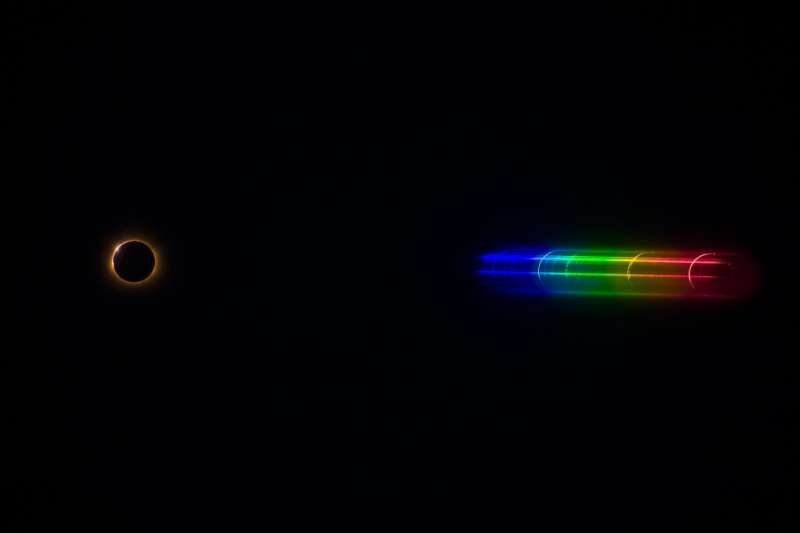
|
Credit & Copyright: Constantine Emmanouilidi
Explanation:
In a flash, the
visible spectrum of the Sun changed from
absorption to emission on November 3rd,
during the brief total phase of a solar eclipse.
That
fleeting moment is captured by telephoto lens and
diffraction grating in this well-timed image
from clearing skies over Gabon in equatorial Africa.
With overwhelming light from the Sun's disk
blocked by the Moon, the normally dominant
absorption spectrum of the solar photosphere is hidden.
What remains, spread by the
diffraction grating into
the spectrum of colors to the right of the eclipsed Sun,
are individual eclipse images at each wavelength of light
emitted by atoms along the thin arc of
the solar chromosphere.
The brightest images, or strongest
chromospheric emission lines,
are due to Hydrogen atoms that produce the red hydrogen
alpha emission at the far right and blue hydrogen beta
emission to the left.
In between, the bright yellow emission image is caused by atoms of Helium,
an element only first discovered in the
flash spectrum of the Sun.
|
January February March April May June July August September October November December |
| ||||||||||||||||||||||||||||||||||||||||||||||||
NASA Web Site Statements, Warnings, and Disclaimers
NASA Official: Jay Norris. Specific rights apply.
A service of: LHEA at NASA / GSFC
& Michigan Tech. U.
Based on Astronomy Picture
Of the Day
Publications with keywords: spectrum - solar eclipse
Publications with words: spectrum - solar eclipse
See also:
